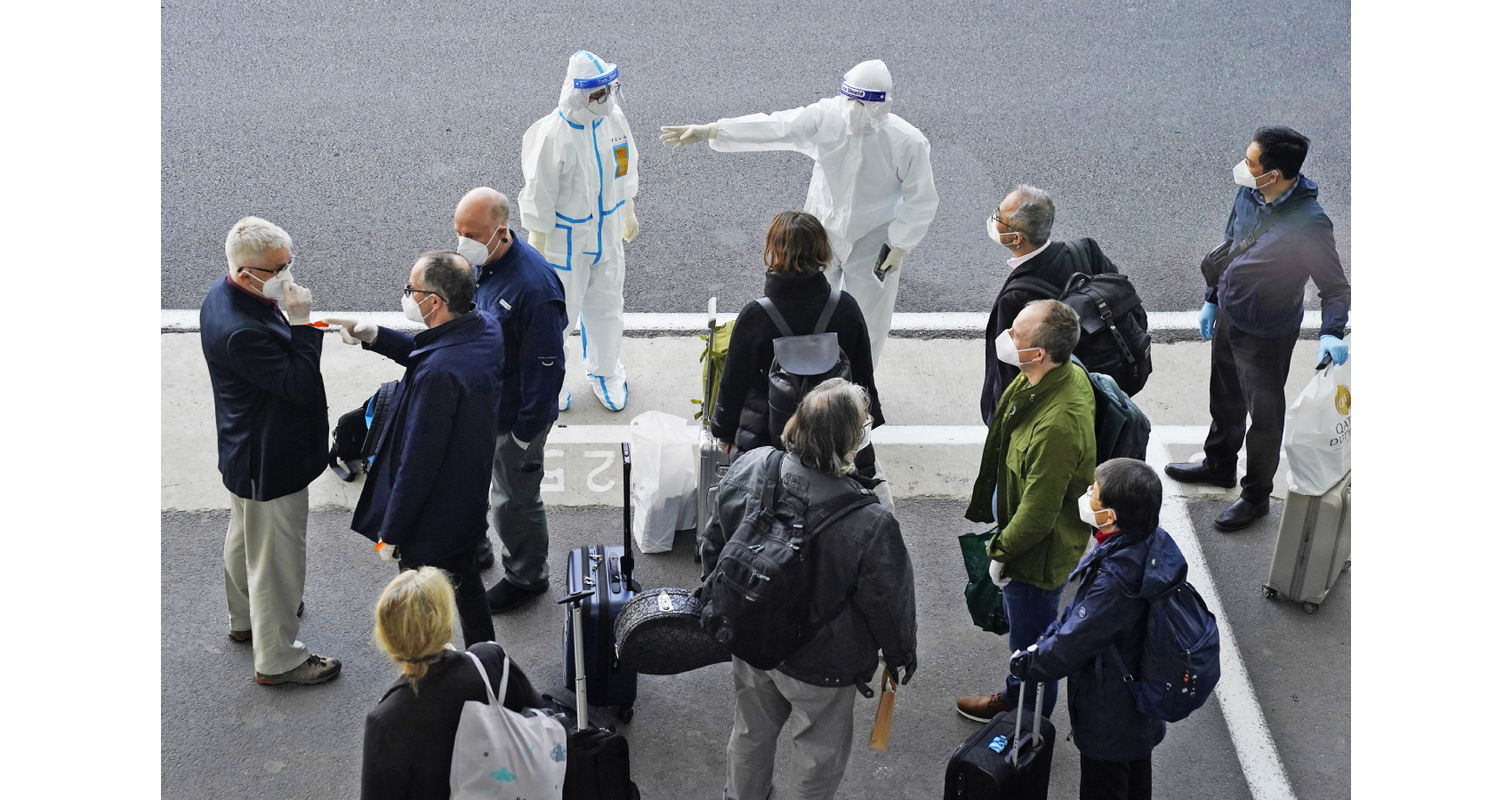Following a month-long fact-finding mission in China, a World Health Organization (WHO) team investigating the origins of the COVID-19 pandemic concluded that the virus probably originated in bats and passed to people through an intermediate animal.
More than a year after Covid-19 touched off the worst pandemic in more than a century, scientists have yet to determine its origins. The closest related viruses to SARS-CoV-2 were found in bats more than 1,000 miles from the central Chinese city of Wuhan, where the disease erupted in late 2019. Initially, cases were tied to a fresh food market and possibly the wildlife sold there. Other theories allege the virus accidentally escaped from a nearby research laboratory, or entered China via imported frozen food. Amid all the posturing and finger-pointing, governments and scientists agree that deciphering the creation story is key to reducing the risk of future pandemics.
Following a month-long fact-finding mission in China, a World Health Organization (WHO) team investigating the origins of the COVID-19 pandemic concluded that the virus probably originated in bats and passed to people through an intermediate animal. But fundamental questions remain about when, where and how SARS-CoV-2 first infected people.
To trace the virus’s origin, it’s crucial to pin down exactly when the first cases occurred in people. The WHO team established that the first person known to have COVID-19 was an office worker in Wuhan with no recent travel history, who began showing symptoms on 8 December 2019, says Peter Ben Embarek, a food-safety scientist at the WHO in Geneva, Switzerland, who led the investigation. But the virus was probably spreading in the city before that, because it was well-established by later that month, he says.
While the World Health Organization (WHO) report on the origins of the novel coronavirus was released on March 30th, 2020, the draft report has said that the laboratory origin theory of SARS-Cov-2 — that it was leaked from a laboratory — is “extremely unlikely”. According to a report by CNN, which says that it has reviewed the draft report, the virus started spreading probably a month or two before December 2019, when it first came into notice.
Markets that sold animals — some dead, some alive — in December 2019 have emerged as a probable source of the coronavirus pandemic in a major investigation organized by the World Health Organization (WHO).That investigation winnowed out alternative hypotheses on when and where the pandemic arose, concluding that the virus probably didn’t spread widely before December or escape from a laboratory. The investigation report, released today, also takes a deep look at the likely role of markets — including the Huanan market in Wuhan, to which many of the first known COVID-19 infections are linked.Of the four possible scenarios on how Covid-19 spread, the draft says the most likely way the pandemic started would have been through an intermediate wild animal which may have been captured and raised on a farm, via a bat, which is considered the most likely origin. However, the report says “the possible intermediate host of SARS-CoV-2 remains elusive”.
Another way the virus could have spread may have been through direct transmission form an infected animal, such as a bat or a pangolin. The report also considers the possibility of the virus having spread from frozen or chilled food, though it says “there is no conclusive evidence for foodborne transmission of SARS-CoV-2 and the probability of a cold-chain contamination with the virus from a reservoir is very low”.
The report, prepared by a joint team of Chinese and international researchers, also looked at the role of Huanan seafood market in Wuhan and said that since there’s evidence of the virus circulating even before the outbreak at the market, which may be ascribed to the crowds gathered there, “Huanan market was not the original source of the outbreak”. The report advises more testing of blood samples taken and stored before the first report of outbreak in December 2019 as well as more testing of animals from Southeast Asia.
“We could show the virus was circulating in the market as early as December 2019,” says the WHO’s Peter Ben Embarek, who co-led the investigation. He adds that this investigation is far from the last. “A lot of good leads were suggested in this report, and we anticipate that many, if not all of them, will be followed through because we owe it to the world to understand what happened, why and how to prevent it from happening again”.
Eddie Holmes, a virologist at the University of Sydney in Australia, says that the report does a good job of laying out what’s known about the early days of the pandemic — and notes that it suggests next steps for study. “There was clearly a lot of transmission at the market,” he says. “To me, looking at live-animal markets and animal farming should be the focus going forward.”
Nevertheless, exactly what happened at the Huanan market remains unknown. Genomic analyses and inferences based on the origins of other diseases suggest that an intermediate animal — possibly one sold at markets — passed SARS-CoV-2 to humans after becoming infected with a predecessor coronavirus in bats. But inconclusive doesn’t mean impossible. Analysts say, there will be more work to come. “This report is a very important beginning, but it is not the end.”











